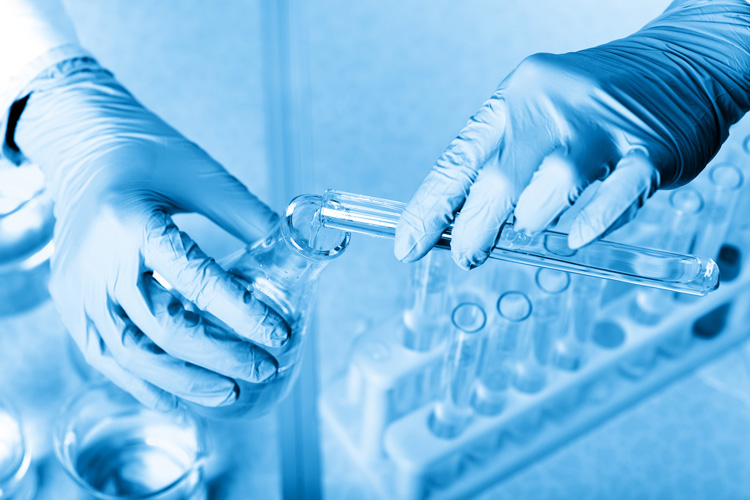+86-13961672821
+86-510-86268020
trust@hi2000.com
trust@hi2000.com
Room 807,No.169 Changjiang road,Huifu plaza,New centre,Jiangyin,Jiangsu China



Views: 0 Author: Site Editor Publish Time: 2025-07-26 Origin: Site









Within our cells and tissues, glutathione operates primarily in two distinct configurations: L-Glutathione Reduced (GSH) and its oxidized counterpart, GSSG. This tripeptide, built from glutamate, cysteine, and glycine, sits at the core of countless physiological activities, particularly our defense against oxidative damage. Understanding the nuances between these interconvertible forms – particularly their effectiveness as antioxidants and their inherent stability – illuminates their critical roles in health, disease treatment, and biochemistry.
GSH: The Rapid Responder:GSH's key asset is its reactive thiol (-SH) group, placing it squarely in the front line of antioxidative defense. It directly neutralizes dangerous free radicals (like superoxide anions and hydroxyl radicals) through donation. Case in point: GSH sacrifices itself, oxidizing to GSSG, while simultaneously quenching hydroxyl radicals. This direct quenching prevents molecular damage cascading into cellular catastrophe – protecting DNA, proteins, and vital lipids from oxidative breakdown.
GSSG: System Recharger:GSSG lacks intrinsic free-radical scavenging ability. Instead, its value lies indirectly. Inside cells, glutathione reductase converts GSSG back into active GSH, leveraging NADPH as fuel. Crucially, this conversion takes precious time and energy. When oxidative bursts demand rapid defense – like an infection or toxin exposure – GSH clearly outclasses GSSG in immediacy.
GSH: The Multitasker:GSH participates actively in cellular metabolic activity flow:
It shields enzyme sulfhydryl groups crucial for DNA operations (synthesis and repair), promoting genomic integrity.
It directly modulates enzyme activation/inhibition states (e.g., boosting glutathione peroxidase activity).
Its fight against oxidative trespass intrinsically supports healthy metabolic functions.
GSSG: The Redox Barometer:GSSG functions predominantly as a signal and regulator via its concentration equilibrium with GSH. The GSH/GSSG ratio serves as the primary cellular 'redox indicator'. Rising GSSG signals oxidative stress, triggering protective pathways. While GSSG actively partakes in regulating this balance, it doesn't engage directly in most metabolic reactions like its reduced partner.
GSH: Clinically Proven Performer:Long-standing clinical consensus highlights GSH's direct benefits:
Liver Champion:GSH is pivotal in treating drug/toxin-induced or alcoholic liver damage. It mitigates oxidant assault directly within hepatocytes, boosts detox pathways, and shields cell membranes, expediting function recovery.
Eye Health Guardian:Ophthalmology leverages GSH, particularly in cataract prevention/progression. By preserving the lens' redox microenvironment, it counters harmful protein oxidation/precipitation processes.
GSSG: Indirect Restoration Focus:While GSSG possesses therapeutic potential, its action relies heavily on cellular conversion:
Providing supplemental GSSG aims to bolster cellular antioxidant reserves indirectly after cellular reduction machinery processes it. Its efficacy therefore hinges critically on the cell's metabolic health and reducing power status.
GSH: Sensitivity Personified:GSH's active thiol (-SH) group marks its Achilles' heel. This group readily oxidizes upon exposure to atmospheric oxygen, dissolved oxygen in solutions – essentially any oxidizing agent converts GSH to GSSG. Its chemical reactivity tightly ties to its instability, limiting its persistence.
GSSG: Disulfide Bridge Stability:GSSG's oxidized structure, featuring an intramolecular disulfide bridge (-S-S-), inherently surpasses GSH's stability. Barring strong reducing agents or harsh conditions, GSSG maintains its chemical identity far more robustly – shop-quality stability GSH can only dream about.
GSH: Needs Constant Coddling: Preserving GSH mandates stringent controls:
Temperature: Requires cold storage (2-8°C).
Atmosphere: Shields from air/oxygen exposure are non-negotiable.
Light: Dark environments are essential.
Solution State: Extremely unstable; immediate use or specialized anaerobic, refrigerated short-term storage is paramount—activity will decline fast otherwise.
GSSG: Surprisingly Forgiving:GSSG tolerates relatively wider storage parameters:
Although cooler temperatures (refrigeration) are preferable, room temperature storage for specific durations is often feasible barring extremes.
Standard preparation and handling practices prove sufficient under typical lab/clinical conditions. Handling GSSGs relinquishes much of the operational stress accompanying GSH solutions.
GSH: Cellular Dynamo:Cells rapidly consume GSH metabolically: fueling antioxidant defenses, conjugation detox reactions, enzyme regulation. Its half-life proves brief; defending against oxidative bursts depletes reserves exceptionally fast, demanding incessant biosynthetic replenishment.
GSSG: The Intracellular Reservoir:Once synthesized *or* formed via GSH oxidation, GSSG displays remarkable persistence intracellularly. It conservatively persists until glutathione reductase taps NADPH reserves strategically to regenerate its active GSH form. This stability creates a crucial buffer, ensuring readily convertible antioxidant capacity remains accessible whenever cells face oxidant threats.
Clarifying glutathione's duality underscores its indispensability:
Effectiveness:GSH remains the undisputed direct-action titan: superior antioxidant capacity and active metabolic influencer. GSSG provides crucial systemic support via redox signaling and buffering upon conversion.
Stability:Honestly surprising? GSSG wins comprehensively: chemically resilient molecule, storage-friendly behavior, and reliable persistence inside our cells.
Significance:This duality shapes cellular biology research strategies. In medicine, knowing when GSH delivers needed immediacy vs. harnessing GSSG's regenerative potential dictates smarter therapeutic choices. Product developers keenly leverage stability insights—especially outside specialized storage. Ultimately, both orchestrate an essential cellular seesaw: balanced GSH/GSSG interaction protects cellular integrity across countless physiological states. Understanding their dynamic interplay clarifies molecular functioning while directly improving clinical application approaches year-over-year.